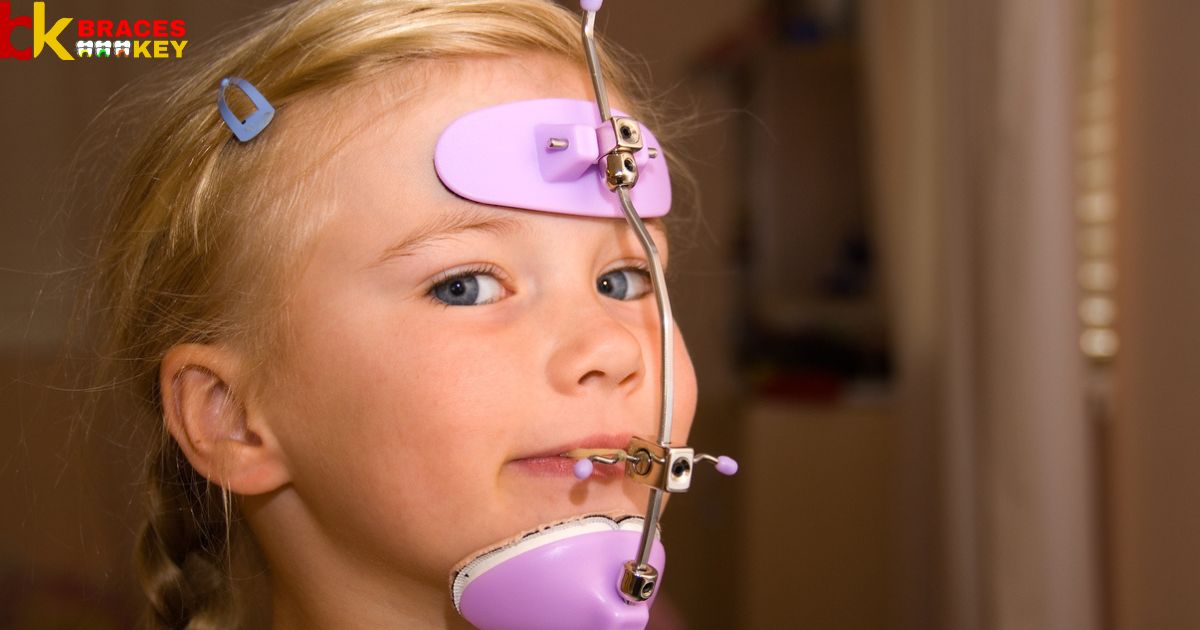Orthodontic headgear is a device worn outside the mouth to help align teeth and bite with orthodontic treatments like braces. While headgear is less common now, some children may need it to address severe orthodontic issues like an overbite or spacing problems.
If your child has teeth that are greatly crowded or protruding, an experienced orthodontist may recommend headgear. By applying continuous gentle pressure from the roof of the mouth outwards, headgear can slowly shift teeth into the right positions over months of wear.
Modern headgear comes in customized sizes and styles. An orthodontist will examine your child’s specific case and recommend headgear if it allows treatment that achieves the ideal outcome. With proper wear, usually nights, headgear discreetly aids braces therapy.
Key Takeaways
Headgear Evaluates Severity: An orthodontist will examine the severity of crowding, spacing, or bite issues to determine if headgear is needed.
Pressure Over Time: Headgear applies constant gentle pressure to slowly realign teeth in hard-to-move positions over months of consistent wear.
More Comfortable Options: Modern headgear is low-profile, attaching discreetly via tooth attachments instead of bulky metal frameworks.
Targeted Treatment: Your orthodontist customizes headgear for your child’s specific bite problem and where forces need to be applied in their mouth. Don’t miss to read out this topic Orthodontic Headgear Still Necessary.
Nightly Wear Is Usually Sufficient: In most cases, having your child wear their headgear only at night during sleep is enough time to see orthodontic progress, without disrupting days.
Overview Of Child Need Orthodontic Headgear
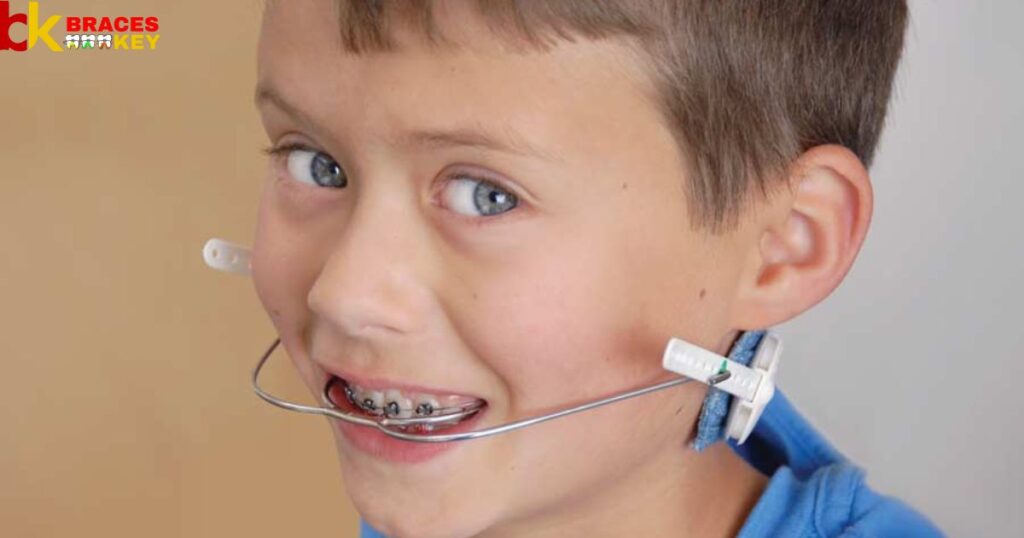
Not all kids needing braces require headgear. An orthodontist will examine bite issues like overcrowding, overbites, and spacing to determine if headgear can help. While less common today, children with severe misalignment potentially requiring years of treatment may be candidates.
New headgear connects discreetly to apply constant pressure augmenting braces. With proper wear, headgear safely guides teeth into alignment for straighter smiles. It remains a suitable option for kids whose bites require more than just braces.
Step By Step Guide To Child Need Orthodontic Headgear
- Your orthodontist will thoroughly examine your child’s teeth, bite, and jaw to determine the extent of any crowding, spacing, or overbite issues present. X-rays may also be taken.
- Based on the evaluation, the orthodontist will create a custom treatment plan indicating whether braces alone can correct the problems or if headgear is a necessary addition.
- If recommended, a lightweight removable headgear will be made from impressions of your child’s teeth. Tiny attachments will connect it discreetly without discomfort.
What Is Orthodontic Headgear?
Orthodontic headgear is an external apparatus worn outside the mouth to aid in correcting dental alignment issues. A metal face frame connects elastic bands from braces on the back teeth, gently forcing the jaw in the needed direction.
Worn often overnight, it applies slow constant pressure to gradually move teeth into their proper positions. Though bulky looking, headgear treatment results in a beautiful straightened healthy smile.
Will Your Kid Need Orthodontic Headgear?

Your dentist will likely recommend orthodontic headgear if your child has significant gaps between their back teeth that can’t support braces. They may also suggest it if your kid has one jaw that is sizably different from the other, causing a serious overbite or underbite.
If your child is undergoing orthodontic treatment for misaligned or crooked teeth, the orthodontist may recommend headgear. It depends on the severity of crowding, gaps, or jawbone size discrepancy issues. Headgear works on teeth and jaw growth areas gently over time.
When Is Headgear Recommended?
Orthodontic headgear is often suggested when there are larger underlying dental problems beyond just crooked teeth. It may be advised if an individual has an under or over developed upper or lower jaw.
Headgear helps guide jawbone growth in children and teenagers who have not finished developing. It can also be useful for expanding a narrow maxilla or correcting an overly protruding mandible. Close monitoring by an orthodontist determines if headgear is the best auxiliary tool for certain bite and jaw misalignments.
What Is Headgear Like Now?
Headgear has come a long way from the bulky metal frames of olden times. Nowadays, headgears are much lighter and less conspicuous. Cutting edge materials like carbon fiber and plastic make for comfortable and discreet designs.
Wireless versions connect to clear aligners or braces via tiny clips rather than thick elastics. Embedded microchips allow remote monitoring of wear time too. State-of-the-art 3D imaging ensures a perfect customized fit. Today’s discrete and high-tech options enhance headgear’s benefits.
How Often Should Your Child Wear It?

The recommended wearing time for orthodontic headgear varies per patient’s needs and the orthodontist’s treatment plan. As a general guideline, children should wear their headgear for 10 to 12 hours per night while sleeping.
This steady prolonged pressure aids jawbone and teeth movement. Wear time may decrease as correction occurs. Your orthodontist will closely track progress and adjust the schedule accordingly. Consistent and proper use, even if part-time, can help achieve the perfect final outcome.
Why Would My Child Need Orthodontic Headgear?
There are several dental issues that may signal the need for headgear during orthodontic treatment. An orthodontist can determine if your child has excess spacing, severe crowding, an overbite or deep bite, crossbite of the teeth, or jawbone structural imbalances.
Headgear works externally to apply light pressure on the upper or lower jawbones, encouraging precise guided growth. It complements braces or aligners to help teeth align properly while also establishing balanced facial development. Early intervention can sometimes eliminate the need for jaw surgery later on.
Reasons Your Child May Need Orthodontic Headgear
There can be certain dental issues that signal the potential need for headgear in conjunction with braces. An orthodontist will examine if the jawbones are symmetrical, the bottom teeth fit neatly within the upper teeth, or if the bite aligned correctly.
Headgear gently redirects jawbone growth if it is too far forward or back. It also creates needed space if teeth are severely crowded. Applying steady pressure overnight, headgear works in tandem with braces. The end goal is achieving balanced facial structure and an excellent smile.
When Is Headgear For Braces Needed?
Headgear combines well with braces in specific orthodontic cases. It may be recommended if an X-ray shows uneven jaws where one is longer than the other. Applying side pressure with headgear can aid symmetrical development.
For those with an overbite, headgear helps lower incisors adjust under upper teeth. It’s also useful when an excessive overjet presents, as it redirects the mandible. Whether used short or long-term, headgear conveniently treats underlying skeletal discrepancies overnight.
Orthodontic Headgear Types
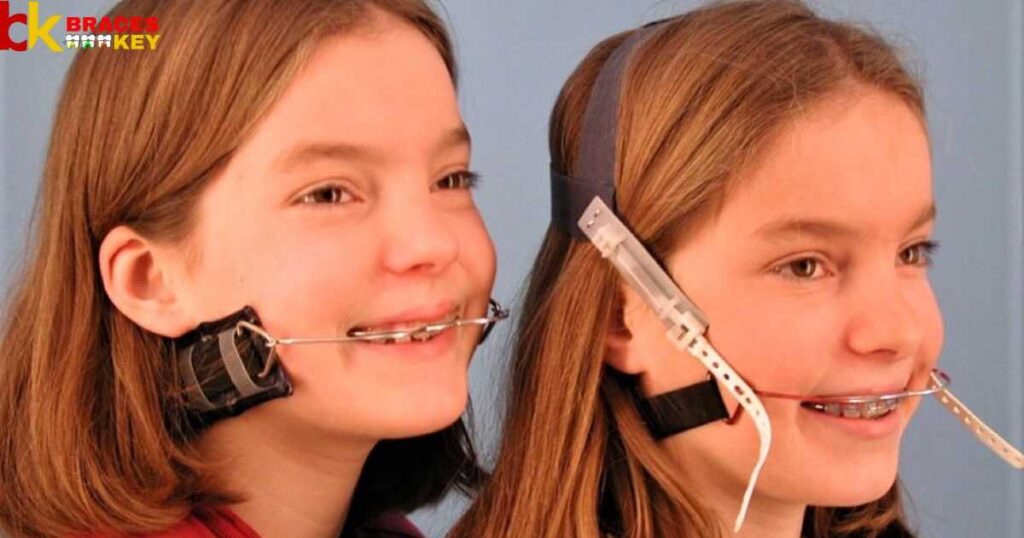
There are a few main types of orthodontic headgear apparel to choose from. Facebows wrap around both sides of the face holding elastic bands. Cervical pull headgear connects behind the neck for pushing or pulling the mandible.
Reverse-pull headgear applies rearward pressure using an elastic bonded to molars. In today’s customized options, 3D imaging scans determine if high-pull or low-pull devices best suit one’s bite issues. Discussing pros and cons with your orthodontist leads to selecting the right headgear for one’s specific treatment needs.
Orthodontic Headgear Adults
While headgear is commonly associated with teenagers undergoing orthodonture, adults can also benefit from its corrective abilities. Often, underlying jaw discrepancies were never addressed early on. Headgear can help realign teeth later in life by gently influencing bone structure overnight.
Adjustable for comfort and discretion, contemporary designs are suitable for work environments. As with Invisalign or lingual braces, invisible options make treatment practical regardless of age. Proper guidance yields beautiful finished smiles for people of all backgrounds and stages.
Headgear Braces Before And After
Documenting the headgear braces process with before and after photos highlights the impressive results. Initially, crowded or misaligned teeth may appear haphazard. Behind the scenes, headgear steadily enhances the underlying skeletal structure. After months of consistent nightly wear, adjustments bring everything into precise order.
Teeth that were once irregularly spaced transform into straight, bright grins. Jaws sculpted into balanced symmetry. Subtle too, yet powerful, headgear plays a key supportive role for braces to deliver that perfect gleaming smile.
Headgear With Braces
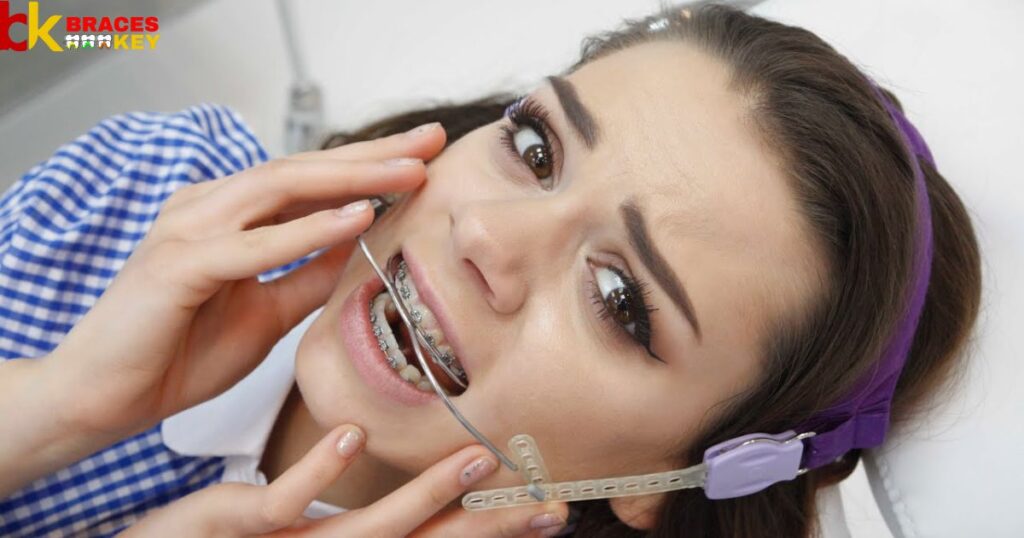
Braces alone aren’t always enough to resolve complex dental misalignments stemming from deep jawbone irregularities. Enter headgear, a flexible accessory that delicately guides developing bone structure. Linked to braces via discrete elastic threads, headgear anchors securely each night.
While you sleep, it applies light persistent pressure to realign protruding or recessed areas. Throughout treatment, orthodontists monitor progress closely. With headgear assisting invisible brackets behind the scenes, straightening seems to happen as if by magic. In the end, a transformed bite also.
How Can Headgear Help Your Child With A Better Smile And Facial Structure?
By delicately shaping underlying bone growth, headgear works hand in hand with braces to sculpt both amazing smiles and aesthetically balanced faces. Through nights of targeted pressure, irregularities diminish as jawbones adjust to form perfect symmetry.
Crooked teeth soon follow suit, sliding into radiant straight lines within an impeccably proportioned structure. What once seemed like severe flaws now blossom into beaming grins of natural beauty. All without harsh force, this innovative tool transforms challenges into attributes with just steady invisible encouragement through wonder years of change.
How Can Headgear Help You Get A Better Smile?
Subtle yet powerful, headgear worn alongside braces harnesses the body’s innate ability to change. Night by night it’s comfortable pressure gently influences growth, encouraging jaws into balanced alignment and teeth to transition. Over consistent months of hidden encouragement, unseen adjustments occur.
What once appeared crooked straightens into radiant order, and spacing seems to fill in naturally. Finally, when braces come off, all that patients and orthodontists see is the reward of their partnership, a bright perfect smile reflecting inner confidence and natural outward beauty.
Three Main Types Of Headgear
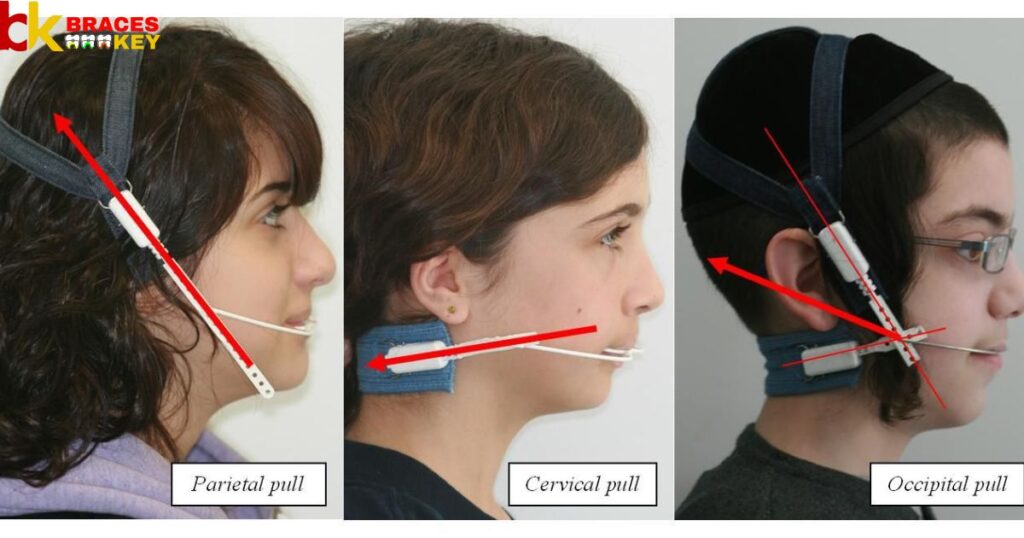
Whether correcting misaligned bites or reshaping jaw structure, headgear provides precise force systems. Facemasks span both cheeks to apply orthodontic torque, often for young patients. Cervical pull hooks behind the neck, nudging jaws sideways.
High-pull gear bonds atop molars, imparting direct backward traction. An orthodontist evaluates dental scans to determine which headgear variety best treats underlying skeletal discrepancies. Each utilizes customized elastic pull for graduating teeth and bones into balanced harmony.
High Pull Headgear
Resembling a crown upon the head, high pull headgear crowns orthodontic care. Where lower jawbones extend too far, these halos of flexible wires and bands work tirelessly to retract.
Connected onto maxillary molar brackets, they exert constant subconscious correction. Throughout sleep, high pull steadfastly inspires retreating reform. Guided internally, facial structure incrementally arises into elegant equipoise. What once appeared fulsome now finds ideal rhythm and flow – teeth properly positioned in architectural splendor.
Cervical Pull Headgear
Encircling comfortably behind the neck, cervical pull headgear performs its function discreetly. Linked by elastic threads to brackets on upper teeth, this flexible apparatus gently nudges the mandible from below.
As one slumbers, it methodically yet minimally pulls the lower jaw sideways or forward into better growth harmony. With each session, alignment gradually ascends towards symmetrical perfection. Movement is meticulous yet meaningful, resulting in luminous order where before lay irregularity. Subtle yet strategic forces sculpt smiles beautifully.
How To Tell If You Need Headgear?
Certain subtle signs suggest one may need the expert guidance of headgear. Crowding or spacing between teeth could relate to an imbalance in jaw dimensions. A concave or convex facial profile may slowly become accentuated without intervention. Even mild misalignments, if left unattended, may worsen eventual self-esteem issues.
An experienced orthodontist analyzes dental scans and examines bite interaction in depth. Their profound knowledge determines whether discrete headwear, working invisibly alongside braces, provides just what one requires for a lifetime of confidence and oral wellness.
Can Adults Wear Headgear?
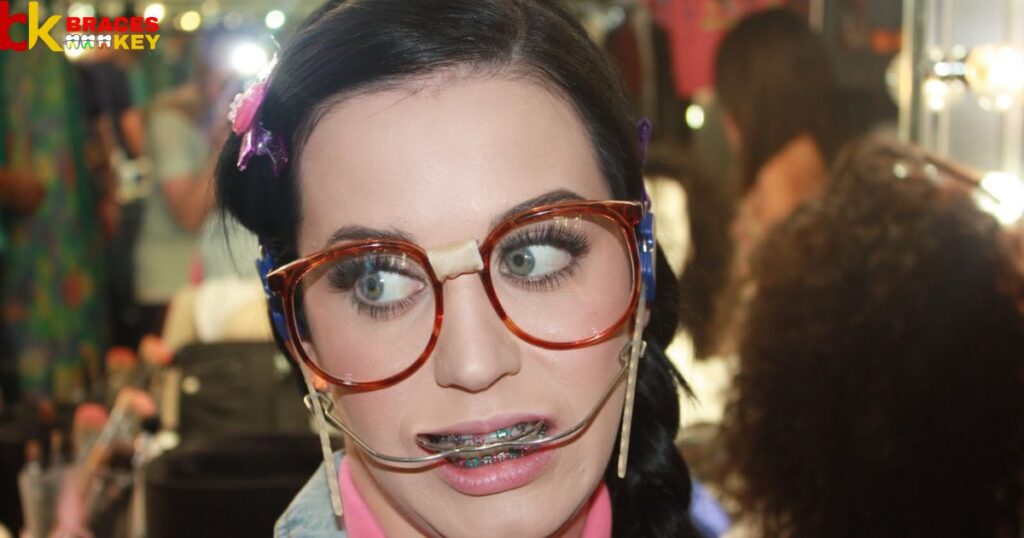
Once perceived as a teenager’s accessory, modern headgear now assists patients of any age seeking a beautiful new smile. Often, underlying asymmetry went unaddressed earlier. However, it’s never too late to enhance one’s facial structure. Headgear harnesses the body’s natural ability to adapt through gentle force.
Custom-fit for comfort, options integrate discreetly with work attire. And as an overnight appliance, it yields results while permitting normal days. Proper guidance can fulfill lifelong dreams of oral health, regardless of when the journey begins.
Does Headgear Require Braces
While headgear works in close partnership with braces, the two are not mutually contingent. Headgear alone can apply subtle corrective pressure to gradually refine jaw structure over time. However, braces provide necessary leverage and precision to efficiently move teeth into a harmonious smile.
Together these complementary appliances maximize comprehensive results. Headgear smoothly shapes bone formation, allowing orthodontic brackets steadily to transport each tooth into balanced symmetry. Their deftly choreographed solidarity permits thorough treatment from multiple expert angles.
FAQ’s
Why Don’t Orthodontists Use Headgear Anymore?
New technology now captures 3D images and simulates bone movement, eliminating guesswork. Headgear gave way to calibrated clear aligners.
What Age Do You Get Headgear?
While some get fixed retainers as teens, others benefit from discreet headgear as young adults to refine jaws into lovely equilibrium.
Who Needs Orthodontic Headgear?
Those with pronounced overbites or underbites, asymmetric smiles, or jaws that don’t meet harmoniously may find invisible headgear shapes emerging beauty beyond their years.
Is There An Alternative To Orthodontic Headgear?
Clear aligners or functional appliances softly nudge malpositioned teeth, although headgear uniquely reshapes bones for most pronounced long-term balance.
Conclusion
While each child’s orthodontic needs differ, headgear remains a discreet option for correcting moderate to severe dental misalignments through gentle bone guidance. With an experienced orthodontist’s examination determining the most effective treatment path, Child Need Orthodontic Headgear.
Parents can feel assured their child will receive individualized care ushering in not just a bright new smile, but also durable oral health and self-confidence for many years of positive growth. Properly applied specialists’ tools help ensure harmony in form and function for a lifetime.
